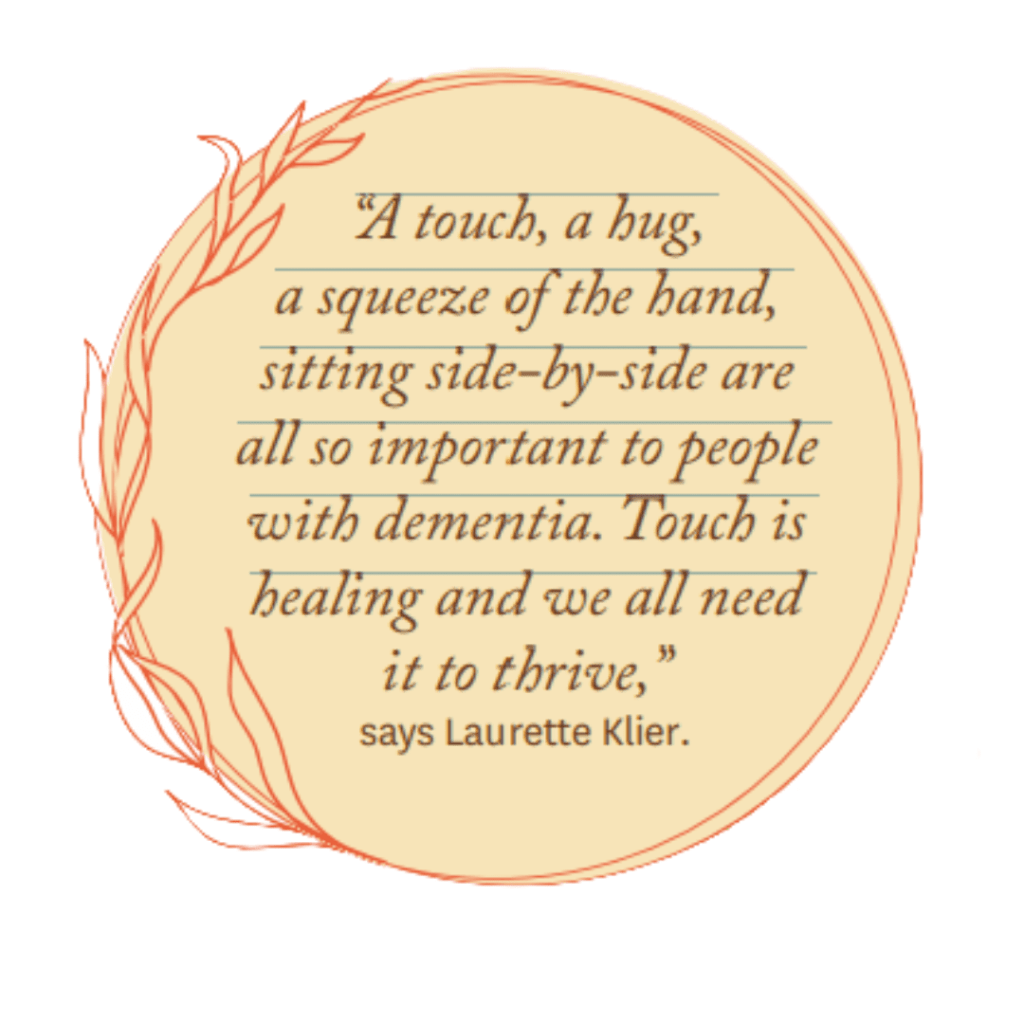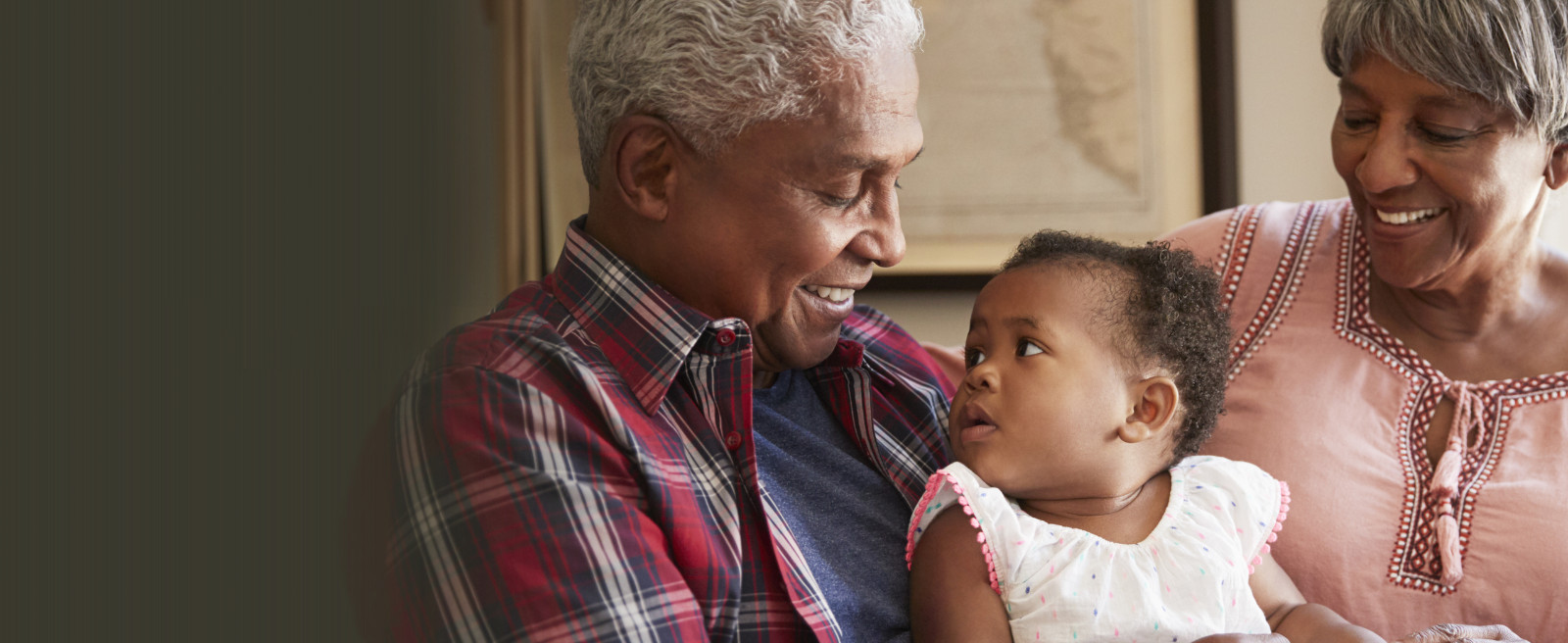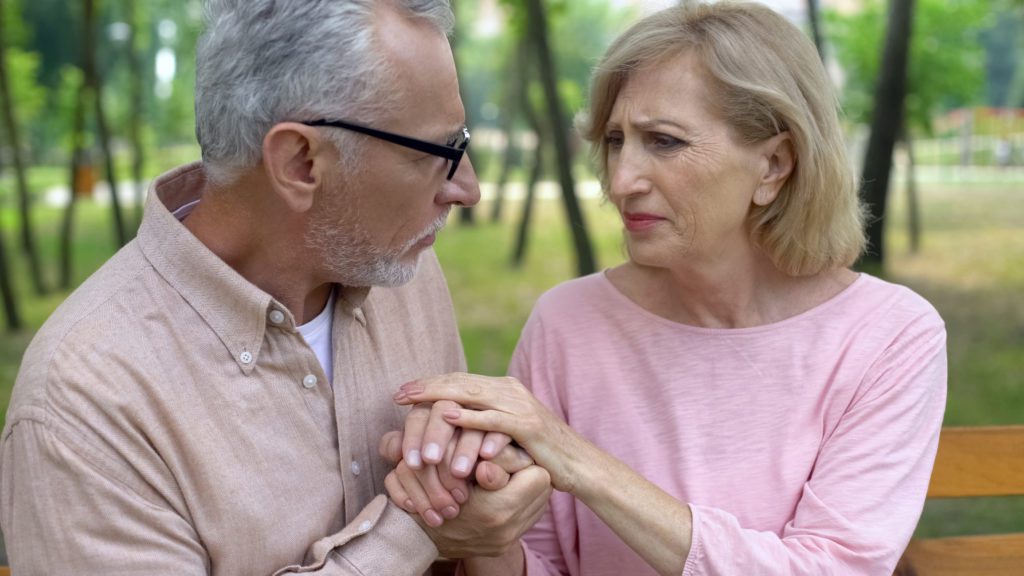Enhanced Engagement: An Alzheimer’s and Dementia Caregiving Approach
Laurette Klier developed her enhanced engagement dementia caregiving approach while visiting her mother-in-law, Nana Mary. Nana Mary was an avid reader until dementia turned this activity into a source of frustration. Klier searched for modified books to meet Nana Mary’s changing needs. But the picture and children’s books “were neither dignified nor stimulating.” So, she set out to create art and literature-based books that were beautiful and engaging, and evoked nostalgia. She has now published a series of these Nana’s Books.
Harness nostalgia
“Nostalgia significantly enhances psychological resources and research shows that reminiscence therapy facilitates adjustment to a diagnosis of dementia. Simply put, nostalgic, loving social engagement helps people to cope.” Before visiting, set an intention to clear your mind of the day’s worries and focus totally on your person with dementia. Think about their life, past and present, and tell them what you like/love about them. Consider how you can impact their comfort and leave them with a deeper sense of joy and peace. “The caregiver needs that as much as the person living with dementia because, after all, it’s a relationship.”
The human spirit awaits within. It is our job and profound privilege to awaken it, says Laurette Klier about the challenges and rewards of connecting to a loved one with a dementia illness. “The paradox with dementia is that while recent memories are addled, early memories are illuminated as the core self remains.”
Touch can be healing

When possible, capitalize on proximity. “A touch, a hug, a squeeze of the hand, sitting side-by-side are all so important to people with dementia. Touch is healing and we all need it to thrive.”
“When we visit, we embrace the person who remains.” Klier, a certified dementia practitioner, has discovered numerous ways to turn visits into “enhanced engagement.” They include pairing nostalgic fine art and literature that persons with dementia and their caregivers can enjoy together. The current means of engagement is like a two-legged stool, she says. “It’s made up of cognition and recreational activities. A vital addition to the mix is heart-centered activity that provides spiritual and emotional support and a better balance, reducing the need for behavioral and pharmacological intervention.” While the time-tested activities are worthwhile, they “do not create many activities for people to connect on a deeper level. Heart-centered visits are life-altering and lifesaving.”
One way of getting close is to share a book or pictures

“Caregivers and people with dementia alike lean into faith, heritage, and cultural traditions to sustain them. Books that include representation matter to everyone, especially to people who long to again feel relevant, revered and included.” Bring books with consistent layouts, such as oversized pictures on the left and large (at least 16-point) type on the right. The pictures should have depth of field rather than just a flat image. Books with short passages of wit or wisdom are good conversation starters. A picture book of little girls playing with their dolls or of holiday scenes could prompt childhood memories.
“Nostalgic texts take the pressure off all parties and provide a ramp into a shared discussion. Unlike personal photo albums, they do not place any expectations on a person living with dementia to remember a loved one or family member when they cannot.”
Practice “active listening”

Here are some pointers on active and deep listening for care partners, based on Klier’s dementia caregiving approach:
• Find a quiet, well-lit place.
• Pick up on your person’s body language and facial expressions.
• Make simple, declarative statements.
• Keep questions open-ended and to a minimum.
• Allow them time to process.
• Seek to understand.
• Name emotions: “I think you are trying to tell me….”
• Listen with an open heart and without judgment.
• Take a genuine interest.
• Validate what they are saying, their lived experience and life story.
• Honor their vulnerability. So much is out of their control. This is a wonderful time to make them feel safe.
• Pay a sincere compliment
Pictures of art and nature also prompt conversation
“Bring a beautiful natural vista and masterpieces of fine art to someone who may not be out in a forest or able to walk the halls of a museum again.” And embrace their time slips. “When we go with them where they are in their mind’s eye, we can get to know them in a way we never have before. I knew my mother-in-law for 30 years on a very superficial level, and only got to know her deeply, and to deeply love her, through the prism of dementia. There’s lots of joy to be found and memories to be made.”
Adapted from the AFA Care Connection webinar, “Enhanced Engagement of Every In-Person and Virtual Visit,” In which Laurette Klier gave an overview of her unique Alzheimer’s and dementia caregiving approach. In addition to being a certified dementia practitioner, Laurette Klier is a certified senior advisor and certified in cognitive stimulation therapy. She holds a master’s and undergraduate degree from Boston College in communications.






